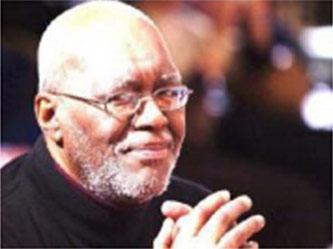American Music Review
Vol. XLII, No. 2, Spring 2013
By Jeffrey Taylor, Brooklyn College, CUNY
Last fall the Hitchcock Institute produced its first all-electronic version ofAmerican Music Review. For many of us accustomed to seeing the blue and white masthead in our mail the change signaled the end of an era. But the feedback from readers about our move to cyberspace has been universally positive, and as always we welcome suggestions on how we can improve the e-version of our journal. The current issue gives even more extensive examples of how our online version can facilitate the study of American music, and we will continue to work on the multimedia aspect of AMR. At the same time, we will always have paper copies in the office available on request, though these will naturally lack the interactive quality of our online version.
With a strenuous debate raging about a Common Core among CUNY campuses, and the adoption of a new University-wide computer system, this has been a turbulent few months on Brooklyn College's campus. The Institute, however, has continued to offer exciting programming. On 11 April, Jorge Arévalo Mateus, who spoke eloquently about his work with the Woody Guthrie Archive last fall, returned to give a presentation about the evolution of new musical styles by Columbians currently living in New York. On 18 April the Institute again collaborated with the Central Brooklyn Jazz Consortium on its annual Brooklyn Jazz Festival, co-sponsoring A Latin Jazz Reunion with guest composer and trombonist Papo Vazquez and pianistArturo O'Farrill with The Brooklyn College Jazz Ensemble. In a packed house, O'Farrill, who currently teaches at Brooklyn College and leads the jazz ensembles, joined Vazquez for duets, small group performances, and big band numbers. Compositions by both artists were showcased. The entire event was filmed by Brooklyn College's Department of TV and Radio for later broadcast on CUNY-TV. Finally, on 2 May Patrick Rivers and Will Fultonbrought in turntables and vintage samplers to demonstrate a history of the development of hip hop beats, using familiar tunes such as The Jackson Five's "Want You Back" to show how producers dissect and reorganize brief musical sections to create fresh musical statements.
We are delighted to introduce another member of the HISAM family. Matt Carter started this past fall as our new College Assistant. A musicology student at the CUNY Graduate Center, he is planning a dissertation on issues related to improvisation. Matt also performs and teaches jazz guitar.

Jitu Weusi (1939-2013). Photo courtesy of Amsterdam News.
Finally, The Institute wishes to acknowledge the recent passing of Jitu Weusi who was an educator, community organizer, and first Director of the Central Brooklyn Jazz Consortium. I first met Jitu many years ago when he was a student in my jazz history course. New to Brooklyn, I had no idea who he was; it was only later that I learned of his community activities, especially his cofounding of The East Cultural and Educational Center in the late 1960s (see my article in this issue). Jitu became an enthusiastic friend of the Institute, and played an important role in our fruitful collaboration with the CBJC. Our thoughts are with his family and many close friends.






